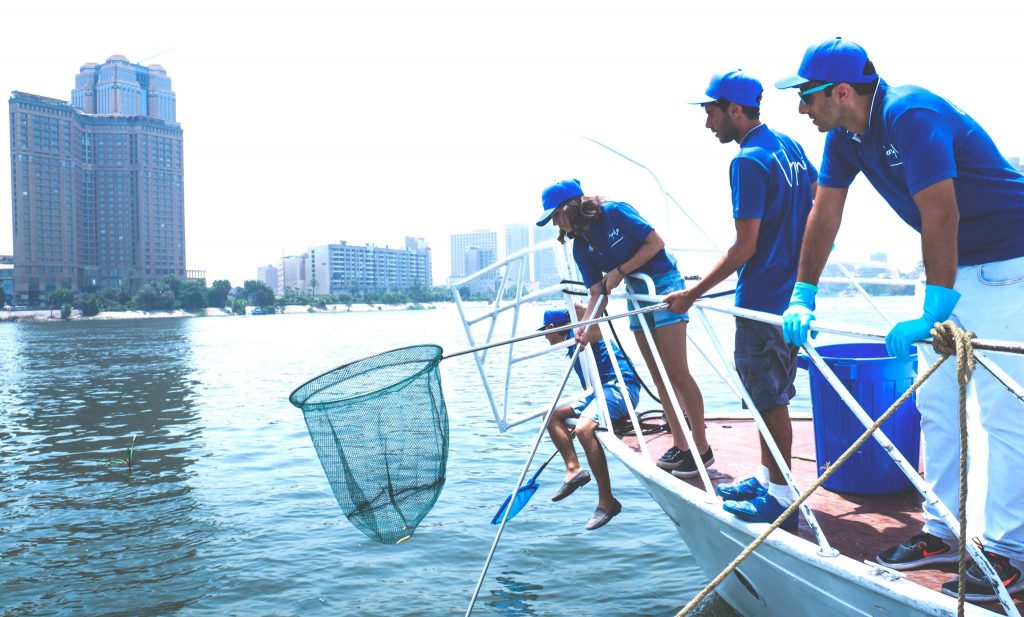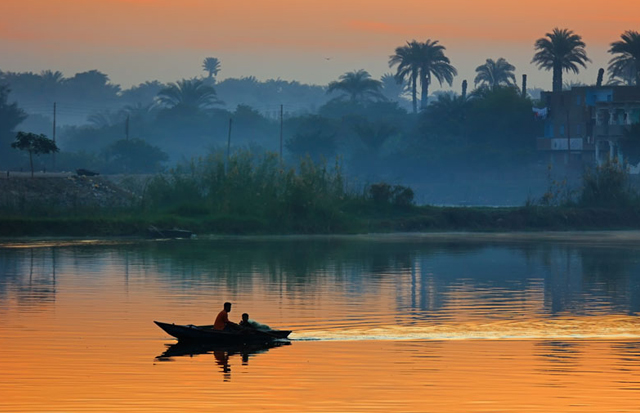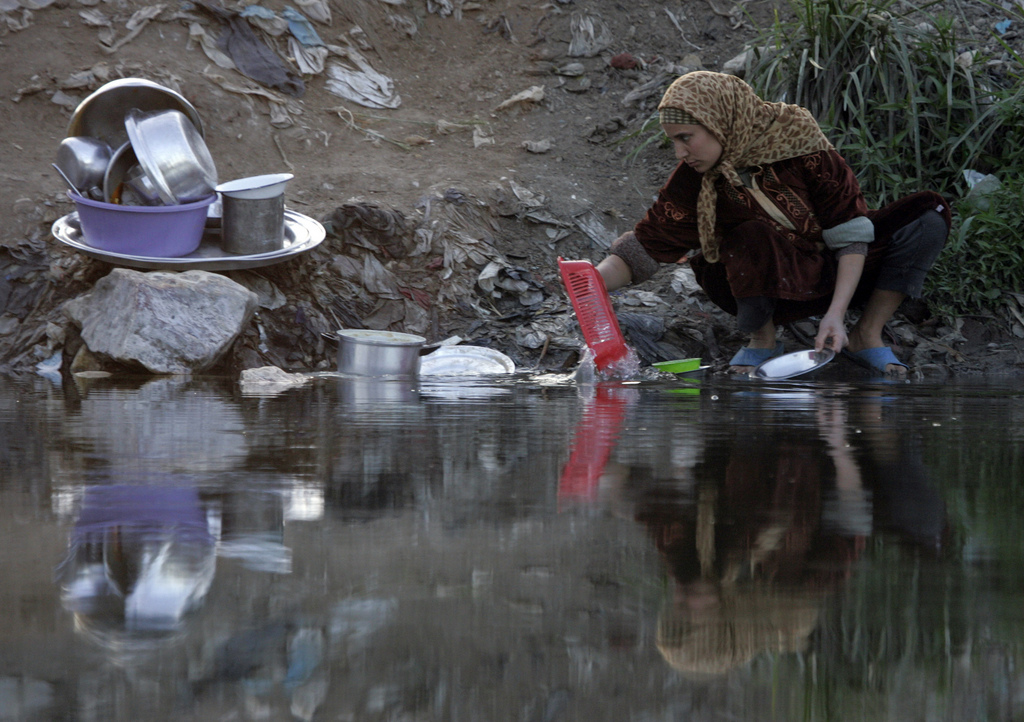
Bassita, a click-funding initiative famous for its social media awareness campaigns, introduced the ‘VeryNile’ initiative on Saturday, in a bid to solve Egypt’s Nile pollution by creating a sustainable ecosystem that recycles the plastic and waste collected from the river.
VeryNile’s first event on December 15th saw 200 volunteers from more than 20 organisations including governmental entities, NGOs, private sector, UN Organisations and embassies gathered to raise awareness through cleaning the Nile and its shores from solid waste. The initiative’s aim is to set up cleanup means that are efficient and environmentally sound in their removal of plastic pollution from aquatic ecosystems, in collaboration with local manpower.
This event was launched in collaboration with Nile Taxi.
”How are we going to get rid of all of that plastic? VeryNile’s mission is to create highly efficient removing tools such as floating dams or cleaning robots. But all that would be useless if we don’t stop throwing plastic everywhere,” expressed Salem Massalha, Bassita’s co-founder.
What causes the pollution?

Although the Nile river is one of Egypt’s most important natural assets, its level of chemical and solid waste pollution is palpable and has been linked to agricultural irrigation projects, population growth, diseases and factory activities.
Up until the Delta, the Nile’s pollution level is considered acceptable. It is only at the Delta’s beginning that the water quality sees a major drop.
Recent studies estimate that more than 300 million cubic meters of industrial liquid sewage are spilled into the Nile, its canals and drains due to the discharge of 34 large industrial facilities between Cairo and Aswan. This is further exacerbated by the non-compliance of some of these facilities with the discharge laws set in 1982.
Main pollutants are industrial factories (sugar, food, beverages, plastic and rubber manufacturers), population growth (sewage), seawater intrusion (salinity), and agriculture (pesticides and fertilizers).

On one hand, governmental authorities blame inhabitants for their lack of compliance with proper waste disposal guidelines. On the other hand, inhabitants, reeling from the repercussions of this pollution, blame the government for not doing enough to limit this pollution and holding factories accountable for their output.
One thing is clear, however, the Nile’s pollution is undeniably affecting its ecosystem, namely the plants, the fish and, ultimately, Egyptians themselves.
Affected flora, algae and fish
It is estimated that 18,000 species of flora and fauna are registered in the country.
Fertilizers, chemical waste and pesticides in agriculture lead to higher concentrations of nutrient salts and metals such as nitrate, iron and manganese that can and do contaminate specie diversity and fish. As such, this affects Nile periphyton, Nile phytoplankton and algae (blue and green), and the najas armata underwater plant in Egypt.
The systematic discharge of these contaminants have also impacted the Nile’s health, slowly diminishing its self-purification capability.
Fish living in polluted waters tend to accumulate heavy metals in their tissues. Most of these metals accumulate mainly in the liver, kidney and gills. Lesions and modifications have been noted in Tilapia nilotica fish, for instance, as well as the catfish.
As such, metal pollution may damage aquatic organisms at the cellular levels and ultimately, this affects the ecological balance. Pollutants not only kill fish, including juveniles, but they reduce fish diversity and food for larger fish is decreased.

Human exposure and ingestion of polluted aquatic marine products such as seafood can cause health problems in humans and animals including neurological and reproductive problems, as cited by experts and Nile biologists in reports across the last decade.
Moreover, aviary creatures regularly ingesting the water such as eagles, white-headed ducks, and the lesser flamingos, are affected in the long-run as well. For instance, throughout the last few years, Lake Manzala, located in the northeastern edge of the Nile Delta, has suffered from decreasing fish and bird species.
This is equally problematic for those ingesting the Nile water, as concentrations of heavy metals exceed the drinking water guidelines, further complicating human health concerns.
One example of this occurred at the city of Sohag, where the high nutrient contamination of the water resulted in an increase in cyanobacteria; these latter produce microcystin, a toxin that can cause severe liver toxicity.
Active steps for a better future
As such, the VeryNile initiative is a new, and pioneering solution as it bridges the gap between civilian output and governmental efforts to combat the problem of pollution.
Aided by Greenish and governmental entities, it seeks not only raise awareness about these various issues, but it also hopes to takes practical steps towards achieving a cleaner Nile.







Comment (1)
[…] How Does the Nile’s Pollution Affect Its Ecosystem and Us? […]